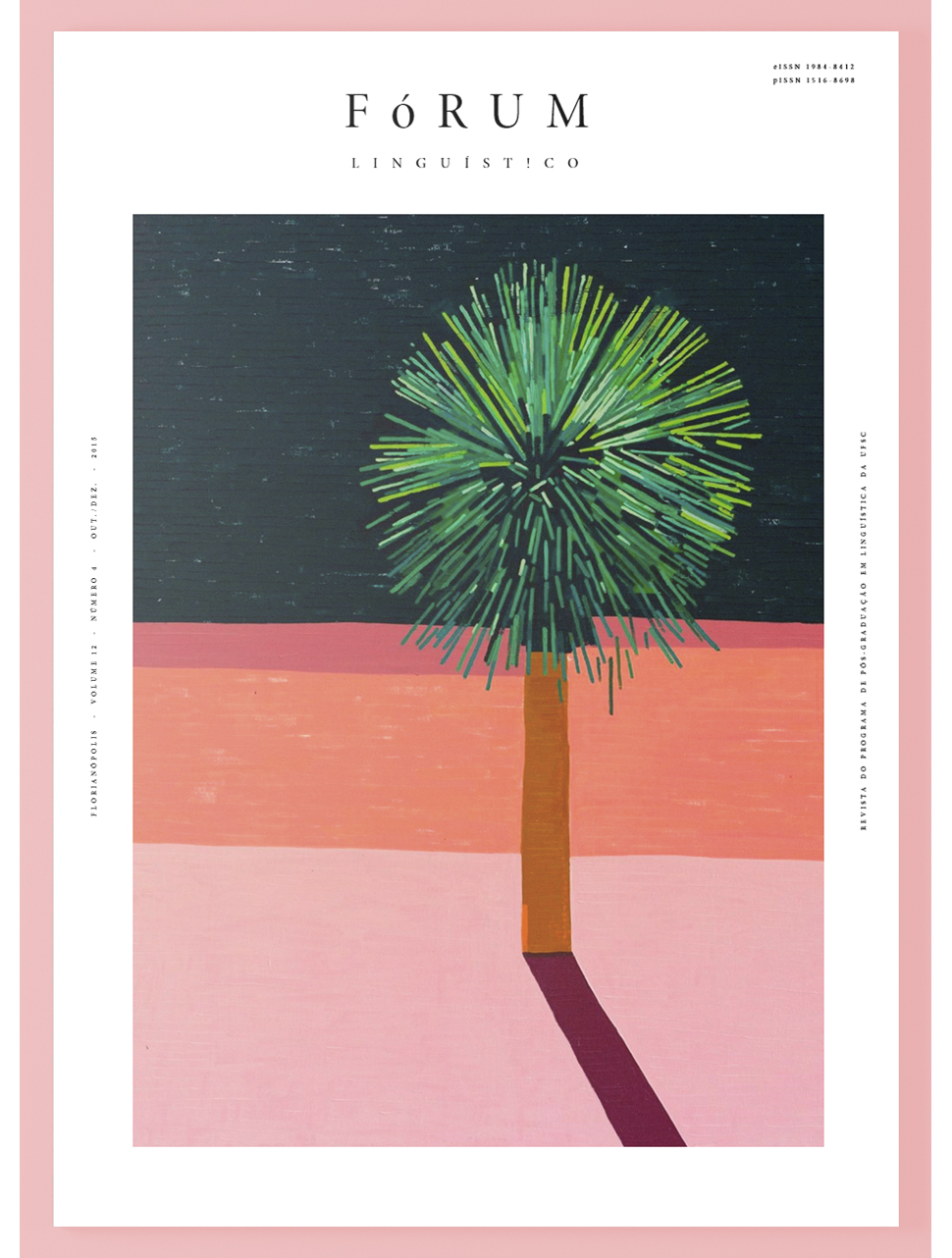"Sobre piris e guetes": análise morfológica das construções cunhadas a partir de splinters de "periguete"
DOI:
https://doi.org/10.5007/1984-8412.2015v12n4p930Resumo
Neste texto, abordamos as formações piri-X (piripobre, piricrente) e X-guete (vovoguete, coroguete), ambas oriundas da palavra derivada recém-criada na língua periguete (“mulher vulgar, trajada com roupas extravagantes”). A análise toma por base a noção de splinter recentemente formulada na literatura morfológica contemporânea (BAUER, 2004; BOOIJ, 2004; GONÇALVES, 2013) e examina tanto os aspectos formais quanto os aspectos semânticos que aproximam e afastam essas formas da classe dos radicais e dos afixos mais prototípicos. Com isso, abordamos a interface da composição com a derivação, mostrando estar diante de dois elementos morfológicos que atuam nas fronteiras entre esses dois principais processos de formação de palavras. Os dados que embasam a análise foram retirados da Internet, sobretudo de blogs, tweets e postagens no Facebook, em decorrência de serem espaços virtuais com interação mais natural e espontânea. Os dados de fala provêm de entrevistas realizadas com informantes (homens e mulheres) de diferentes faixas etárias e graus de escolaridade. Concluímos o estudo mostrando que as duas formas, piri- e -guete, possuem características tanto derivacionais quanto composicionais, encontrando-se em uma posição intermediária entre os dois processos. Assumimos, portanto, que as duas formas fornecem evidências empíricas sobre a existência de um continuum composição-derivação.
Downloads
Publicado
Edição
Seção
Licença
Os trabalhos publicados passam a ser de direito da Revista Fórum Linguístico, ficando sua reimpressão, total ou parcial, sujeita à autorização expressa da Comissão Editorial da revista. Deve ser consignada a fonte de publicação original.
Esta publicação está regida por uma licença Creative Commons Attribution-NonCommercial-NoDerivatives 4.0 International License.



